Research and Validation of Vibratory Harvesting Device for Red Jujube Based on ADAMS and ANSYS
Abstract
1. Introduction
- (1)
- To design an excitation mechanism with adjustable vibration frequency and amplitude, conduct kinematic and dynamic analysis of the mechanism, and verify the design’s rationality through motion simulation using simulation software.
- (2)
- To design a suitable fruit collection mechanism, perform hydrostatic verification and kinematic simulation of the mechanism, and verify the design’s rationality.
- (3)
- To assemble the red jujube harvesting device and test its vibration effect on red jujube trees of different diameters in the orchard to confirm the effectiveness of the vibration mechanism.
- (4)
- To test the fruit collection mechanism’s effectiveness on jujube trees of different diameters in the orchard to confirm the reliability of the mechanism.
2. Materials and Methods
2.1. Overall Scheme Design of Red Jujube Vibration Harvesting Device
2.2. Red Jujube Excitation Mechanism Design
2.2.1. Design of Excitation Mechanism
2.2.2. Kinematic Analysis of the Excitation Mechanism
2.2.3. Simulation of Excitation Mechanism
2.3. Design of Red Jujube Collection Mechanism
2.3.1. Selection of Fruit Collection Mechanism
2.3.2. Design and Principle of Fruit Collection Mechanism
2.3.3. Static Analysis of Fruit Collection Mechanism
- (1)
- Geometric modeling.
- (2)
- Adding material properties.
- (3)
- Mesh division.
- (4)
- Adding constraints and loads.
- (5)
- Hydrostatic analysis.
2.3.4. Kinematic Analysis of the Fruit Collection Mechanism
2.4. Red Jujube Vibratory Harvesting Device Testing
2.4.1. Red Jujube Vibrating Harvesting Device Excitation Mechanism Test
2.4.2. Fruit Collection Mechanism Test of Red Jujube Vibrating Harvesting Device
3. Results
3.1. Results of Simulation Analysis of the Excitation Mechanism
3.2. Results of Simulation Analysis of the Fruit Collection Mechanism
3.2.1. Results of Static Analysis of the Fruit Collection Mechanism
3.2.2. Results of Kinematic Analysis of Fruit Collection Mechanisms
3.3. Test Analysis of Red Jujube Vibrating Harvesting Device
3.3.1. Test Analysis of Red Jujube Vibrating Harvesting Device Excitation Mechanism
3.3.2. Test Analysis of Fruit Collection Mechanism of Red Jujube Vibrating Harvesting Device
4. Conclusions
- (1)
- We designed a red jujube excitation mechanism and carried out dynamics simulations of the mechanism. The results show that the acceleration at the end of the vibrating rod of the mechanism has a tendency to sharply increase and decrease, which facilitates the shedding of red jujubes.
- (2)
- We constructed a collision model between the red jujubes and the fruit collection umbrella, designed a red jujube collection mechanism, and performed structural and kinematic simulations on the key components. The results verify that the mechanism can effectively collect red jujubes.
- (3)
- The jujube tree excitation mechanism can adopt different vibration amplitudes and frequencies based on the tree’s diameter, resulting in a higher net harvesting rate and better vibration effect.
- (4)
- When using the fruit collection mechanism to collect the vibrated down red jujubes from jujube trees with different diameters, the fruit collection efficiency is above 80%, and the fruit collection effect is better, meeting the actual production demand.
Author Contributions
Funding
Data Availability Statement
Conflicts of Interest
References
- Zhang, X.; Wu, Z.; Cao, C.; Luo, K.; Qin, K.; Huang, Y.; Cao, J. Design and operation of a deep-learning-based fresh tea-leaf sorting robot. Comput. Electron. Agric. 2023, 206, 107664. [Google Scholar] [CrossRef]
- Feng, J.; Yu, C.; Shi, X.; Zheng, Z.; Yang, L.; Hu, Y. Research on Winter Jujube Object Detection Based on Optimized Yolov5s. Agronomy 2023, 13, 810. [Google Scholar] [CrossRef]
- Serban, A.C. Aging population and effects on labour market. Procedia Econ. Financ. 2012, 1, 356–364. [Google Scholar] [CrossRef]
- Jiang, W.; Chen, L.; Han, Y.; Cao, B.; Song, L. Effects of elevated temperature and drought stress on fruit coloration in the jujube variety ‘Lingwuchangzao’(Ziziphus jujube cv. Lingwuchangzao). Sci. Hortic. 2020, 274, 109667. [Google Scholar] [CrossRef]
- Wang, J.; Nakano, K.; Ohashi, S. Nondestructive evaluation of jujube quality by visible and near-infrared spectroscopy. LWT Food Sci. Technol. 2011, 44, 1119–1125. [Google Scholar] [CrossRef]
- Hoshyarmanesh, H.; Dastgerdi, H.; Ghodsi, M.; Khandan, R.; Zareinia, K. Numerical and experimental vibration analysis of olive tree for optimal mechanized harvesting efficiency and productivity. Comput. Electron. Agric. 2017, 132, 34–48. [Google Scholar] [CrossRef]
- Hayashi, S.; Yamamoto, S.; Tsubota, S.; Ochiai, Y.; Kobayashi, K.; Kamata, J.; Kurita, M.; Inazumi, H.; Peter, R. Automation technologies for strawberry harvesting and packing operations in Japan. J. Berry Res. 2014, 4, 19–27. [Google Scholar] [CrossRef]
- Sa, I.; Lehnert, C.; English, A.; McCool, C.; Dayoub, F.; Upcroft, B.; Perez, T. Peduncle detection of sweet pepper for autonomous crop harvesting—Combined color and 3-D information. IEEE Robot. Autom. Letters. 2017, 2, 765–772. [Google Scholar] [CrossRef]
- Wang, X.; Kang, H.; Zhou, H.; Au, W.; Chen, C. Geometry-aware fruit grasping estimation for robotic harvesting in apple orchards. Comput. Electron. Agric. 2022, 193, 106716. [Google Scholar] [CrossRef]
- Fu, L.; Al-Mallahi, A.; Peng, J.; Sun, S.; Feng, Y.; Li, R.; He, D.; Cui, Y. Harvesting technologies for Chinese jujube fruits: A review. Eng. Agric. Environ. Food 2017, 10, 171–177. [Google Scholar] [CrossRef]
- Xu, H.; Hua, Y.; He, J.; Chen, Q. The Positive and Negative Synergistic Airflow-Type Jujube Fruit Harvester (P-N JH). Processes 2022, 10, 1486. [Google Scholar] [CrossRef]
- Zhuo, P.; Li, Y.; Wang, B.; Jiao, H.; Wang, P.; Li, C.; Niu, Q.; Wang, L. Analysis and experimental study on vibration response characteristics of mechanical harvesting of jujube. Comput. Electron. Agric. 2022, 203, 107446. [Google Scholar] [CrossRef]
- Zhao, J.; Tsuchikawa, S.; Ma, T.; Hu, G.; Chen, Y.; Wang, Z.; Chen, Q.; Gao, Z.; Chen, J. Modal analysis and experiment of a Lycium barbarum L. Shrub for efficient vibration harvesting of fruit. Agriculture 2021, 11, 519. [Google Scholar] [CrossRef]
- Zhang, J.; Wang, J.; Zheng, C.; Guo, H.; Shan, F. Nondestructive evaluation of Chinese cabbage quality using mechanical vibration response. Comput. Electron. Agric. 2021, 188, 106317. [Google Scholar] [CrossRef]
- Wang, W.; Lu, H.; Zhang, S.; Yang, Z. Damage caused by multiple impacts of litchi fruits during vibration harvesting. Comput. Electron. Agric. 2019, 162, 732–738. [Google Scholar] [CrossRef]
- Whitney, D.; Smerage, G.; Block, W. Dynamic Analysis Of A Trunk Shaker-Post System J. Trans. ASAE 1990, 33, 1066–1070. [Google Scholar] [CrossRef]
- Junming, H.; Weixue, H.; Wei, W.; Hongjie, Z.; Zhi, R. Fruit vibration harvesting technology and its damage. A review. Inmateh-Agric. Eng. 2021, 63. [Google Scholar] [CrossRef]
- Meng, X.; Tang, Z.; Sheng, C.; Jia, S.; Liu, W.; Zhou, Y.; Zheng, X. 4YS-24 Red Jujube Harvester. Xinjiang Agric. Mech. 2013, 157, 13–14. [Google Scholar]
- Fu, W.; He, R.; Qu, J.; Sun, Y.; Wang, L.; Kan, Z. Design of self-propelled dwarf dense red jujube harvester. J. Agric. Mech. Res. 2014, 36, 106–109. [Google Scholar]
- Yang, H.; Kan, Z.; Wang, L.; Fu, W.; He, R.; Sun, Y. Design of dwarf dense red jujube harvesting device. J. Agric. Mech. Res. 2012, 34, 77–80. [Google Scholar]
- Wang, C.; Xu, L.; Zhou, H.; Cui, Y.; Cui, H. Development and testing of eccentric forest fruit vibration harvesting machine. Trans. Chin. Soc. Agric. Eng. 2012, 28, 10–16. [Google Scholar]
- He, R. Design and Experimental Study of Excitation Device of Self-Propelled Dwarf and Close Planting Jujube Harvester. Master’s Thesis, Shihezi University, Shihezi, China, 2014. [Google Scholar]
- Wang, L.; He, R.; Fu, W.; Kan, Z.; Sun, Y.; Chu, S. Optimization of harvesting device parameters for dwarf dense red jujubes. J. Agric. Mech. Res. 2014, 36, 161–163+172. [Google Scholar]
- Cui, J.; Zhang, H.; Fu, W.; Kan, Z.; Liu, Y. Design of self-excited vibration force compensated red jujube vibration harvesting test device. J. Agric. Mech. Res. 2017, 39, 18–22+28. [Google Scholar]
- Fu, W.; Zhang, Z.; Ding, K.; Cao, W.; Kan, Z.; Pan, J.; Liu, Y. Design and test of 4ZZ-4A2 full-hydraulic self-propelled jujube harvester. Int. J. Agric. Biol. Eng. 2018, 11, 104–110. [Google Scholar] [CrossRef]
- Yin, S.; Zhang, T.; Dong, X.; Ran, X.; Sun, X. Design and test of self-propelled red jujube harvesting machine with variable ground clearance. Agric. Eng. 2019, 9, 67–71. [Google Scholar]
- Zheng, Z.; Hu, Y.; Guo, T.; Qiao, Y.; He, Y.; Zhang, Y.; Huang, Y. AGHRNet: An attention ghost-HRNet for confirmation of catch-and-shake locations in jujube fruits vibration harvesting. Comput. Electron. Agric. 2023, 210, 107921. [Google Scholar] [CrossRef]
- ADAMS, M. Automatic dynamic analysis of mechanical systems. MSC Softw. Corp. 2014. [Google Scholar]
- Hou, J.; Qiao, Y.; Guo, T. An Amplitude and Frequency Adjustable Vibration Device Based on Amplitudu Modulation Dial. China Patent CN217742327U, 8 November 2022. [Google Scholar]
- Zhang, Z. Optimization Design and Experiment of Jujube Exciter Based on Dynamics Similarity Theory. Master’s Thesis, Shihezi University, Shihezi, China, 2019. [Google Scholar]
- Lo, K.H.; Shek, C.H.; Lai, J. Recent developments in stainless steels. Mater. Sci. Eng. R Rep. 2009, 65, 39–104. [Google Scholar] [CrossRef]
- Yu, C.; Qiao, Y.; Feng, J.; Guo, T.; Luo, W.; Guo, J.; Hu, Y. Optimization of Vibration Parameters for Jujube Trees with Different Diameters. Forests 2023, 14, 1287. [Google Scholar]
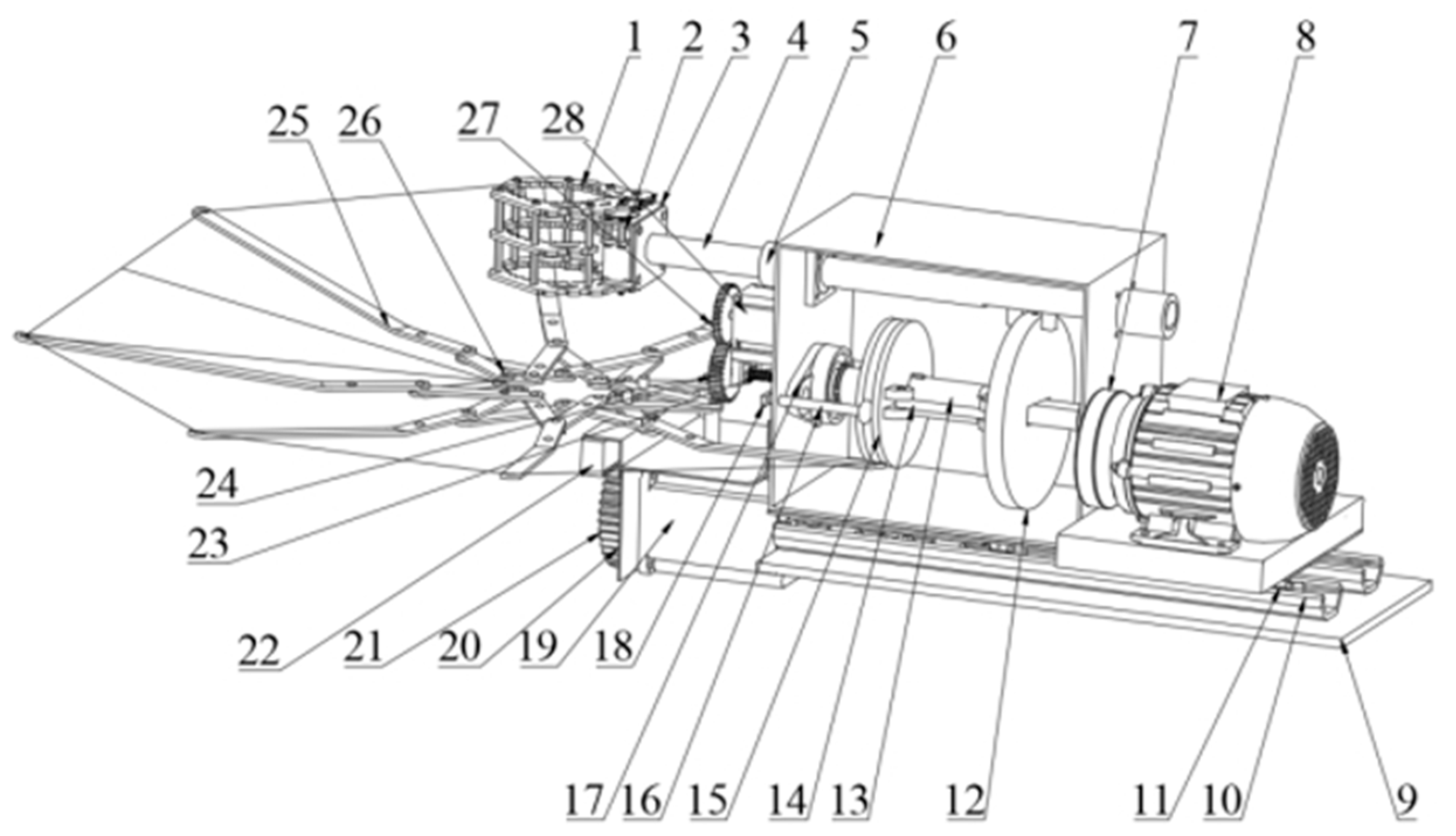

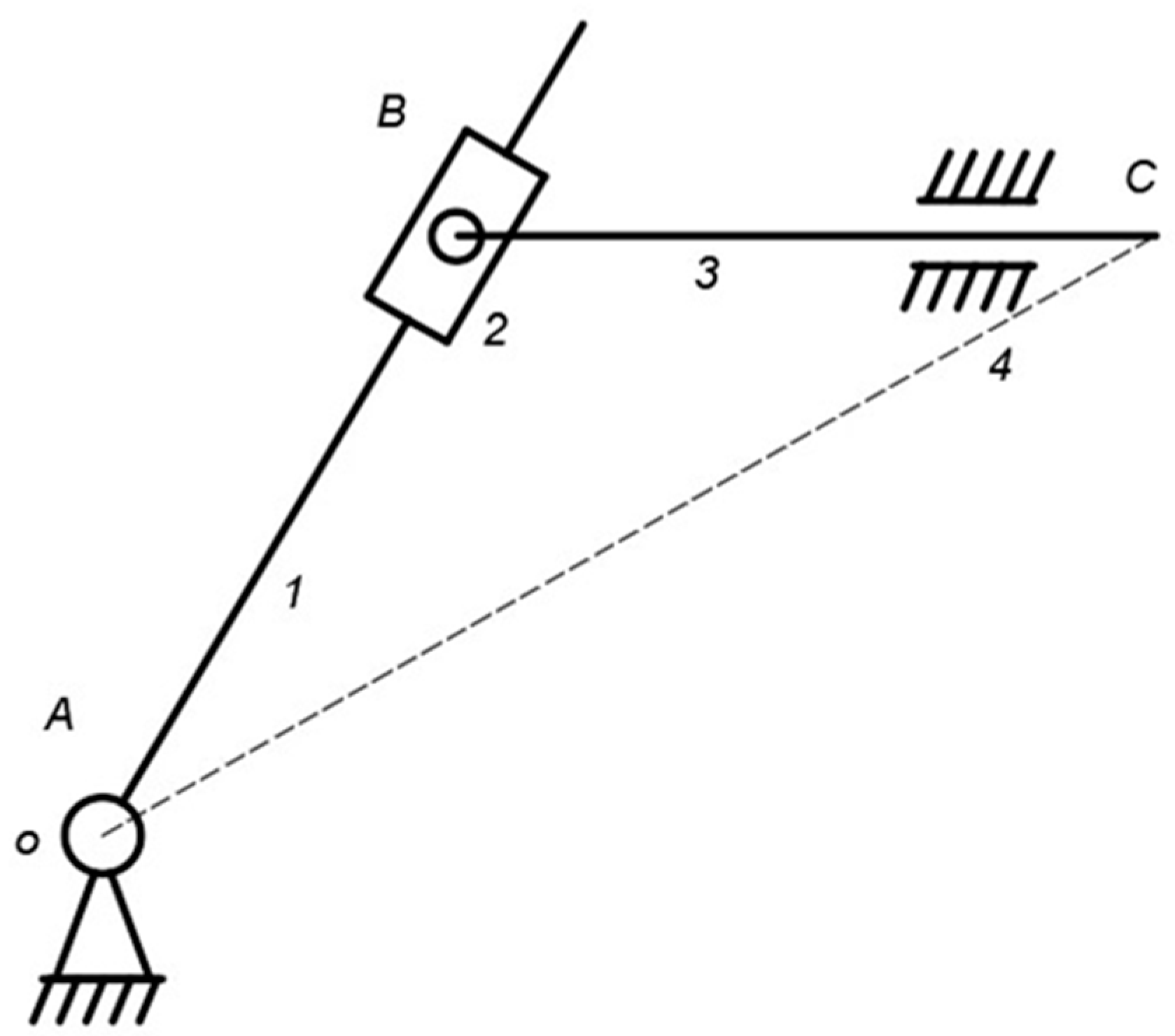
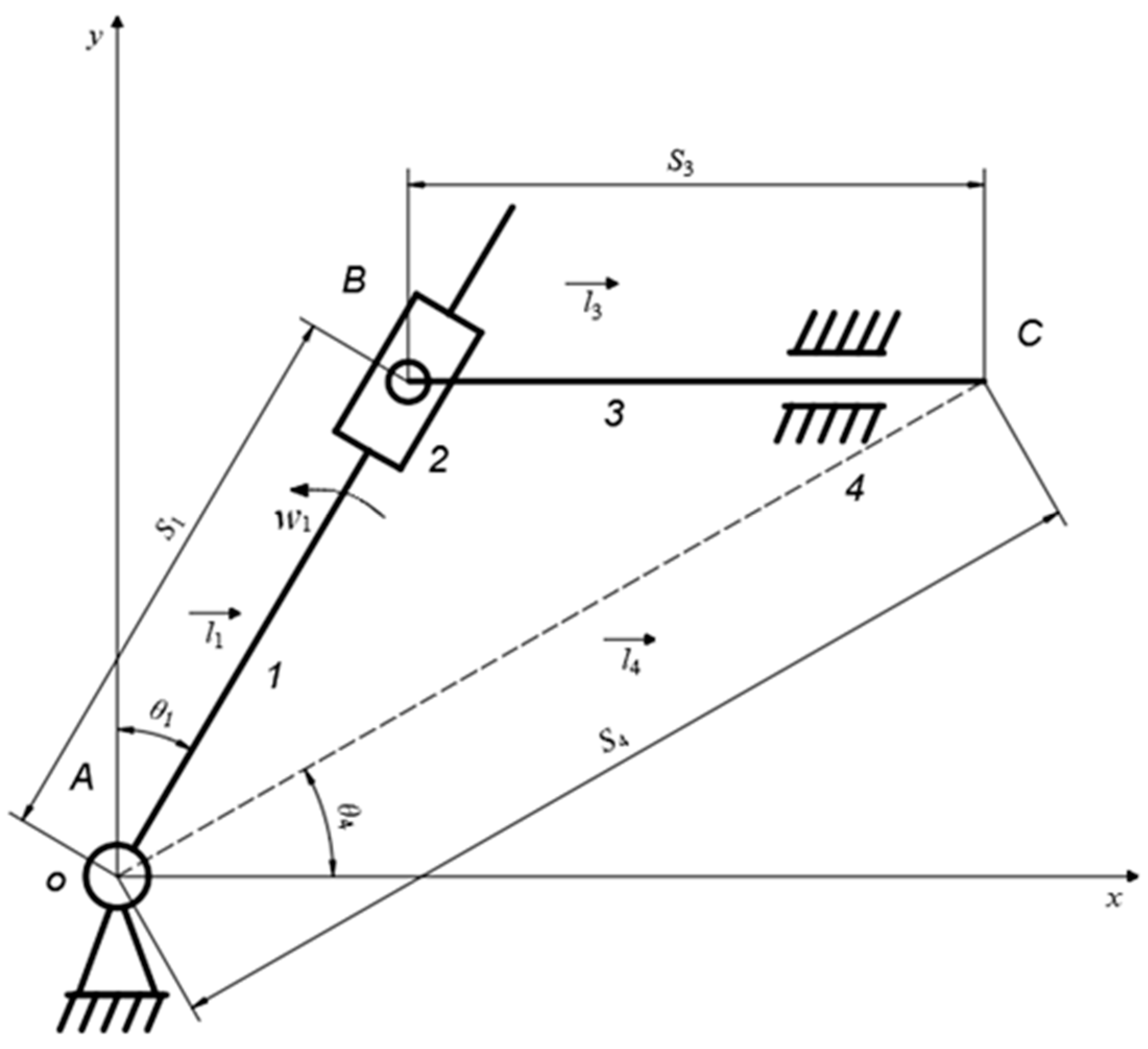
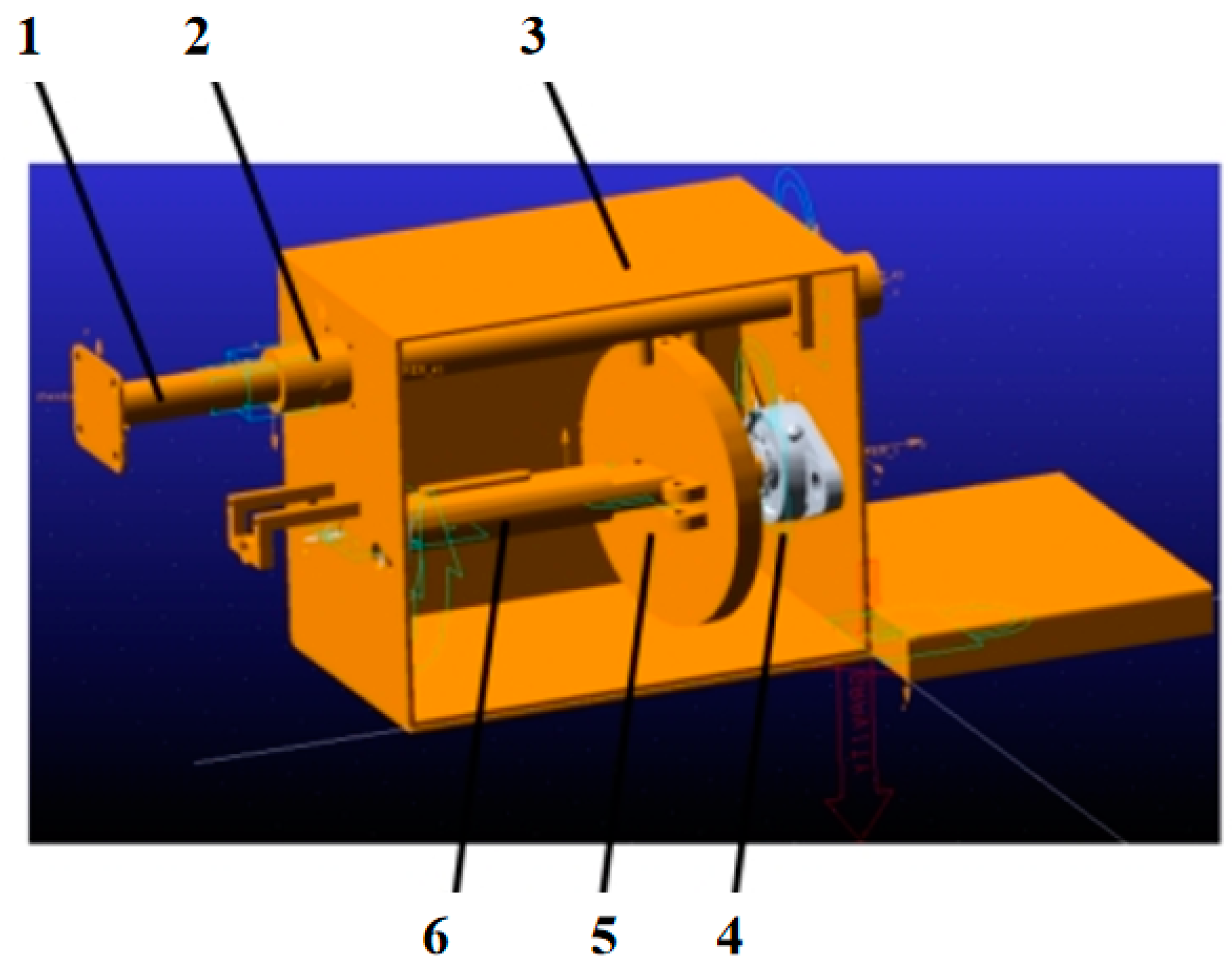

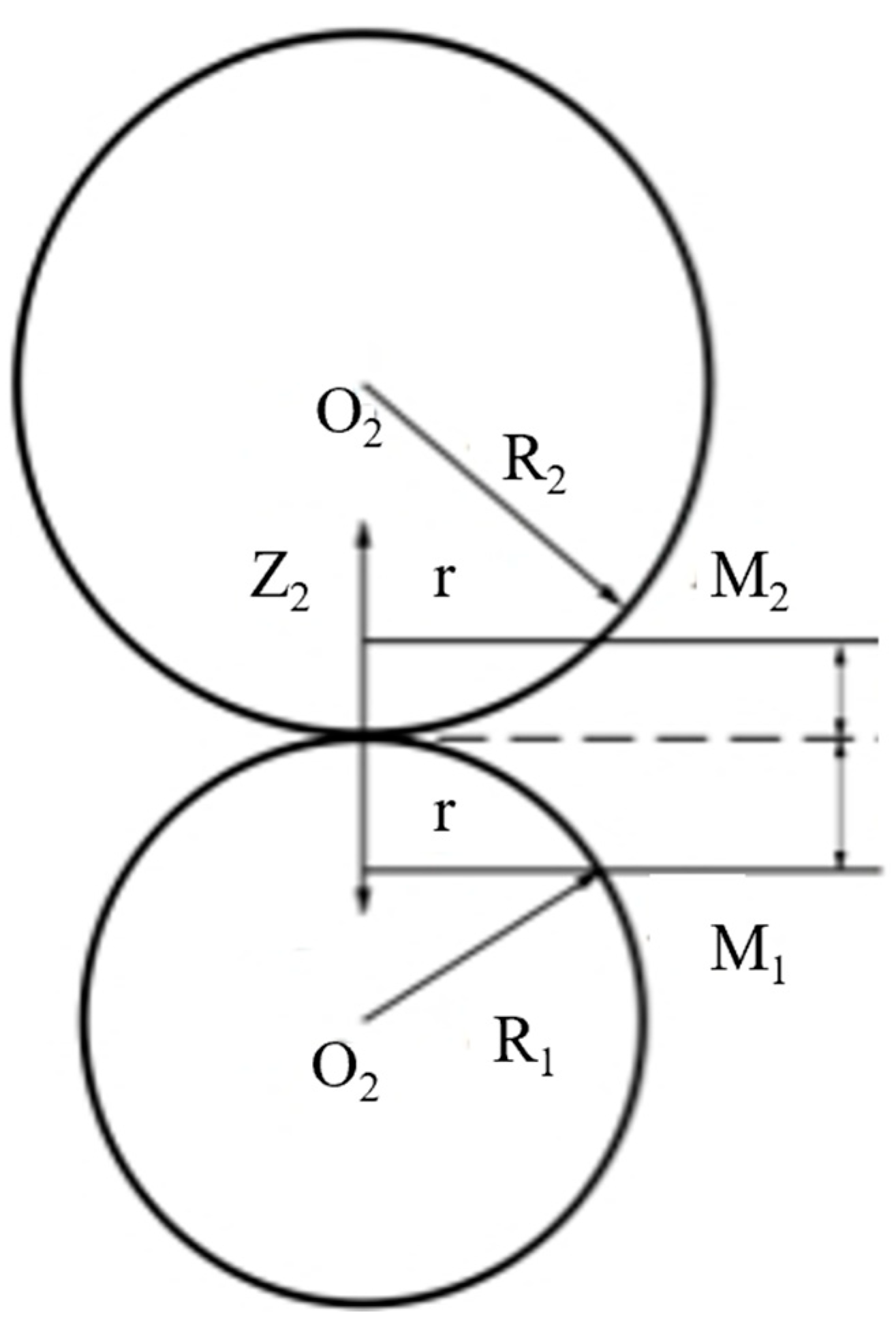

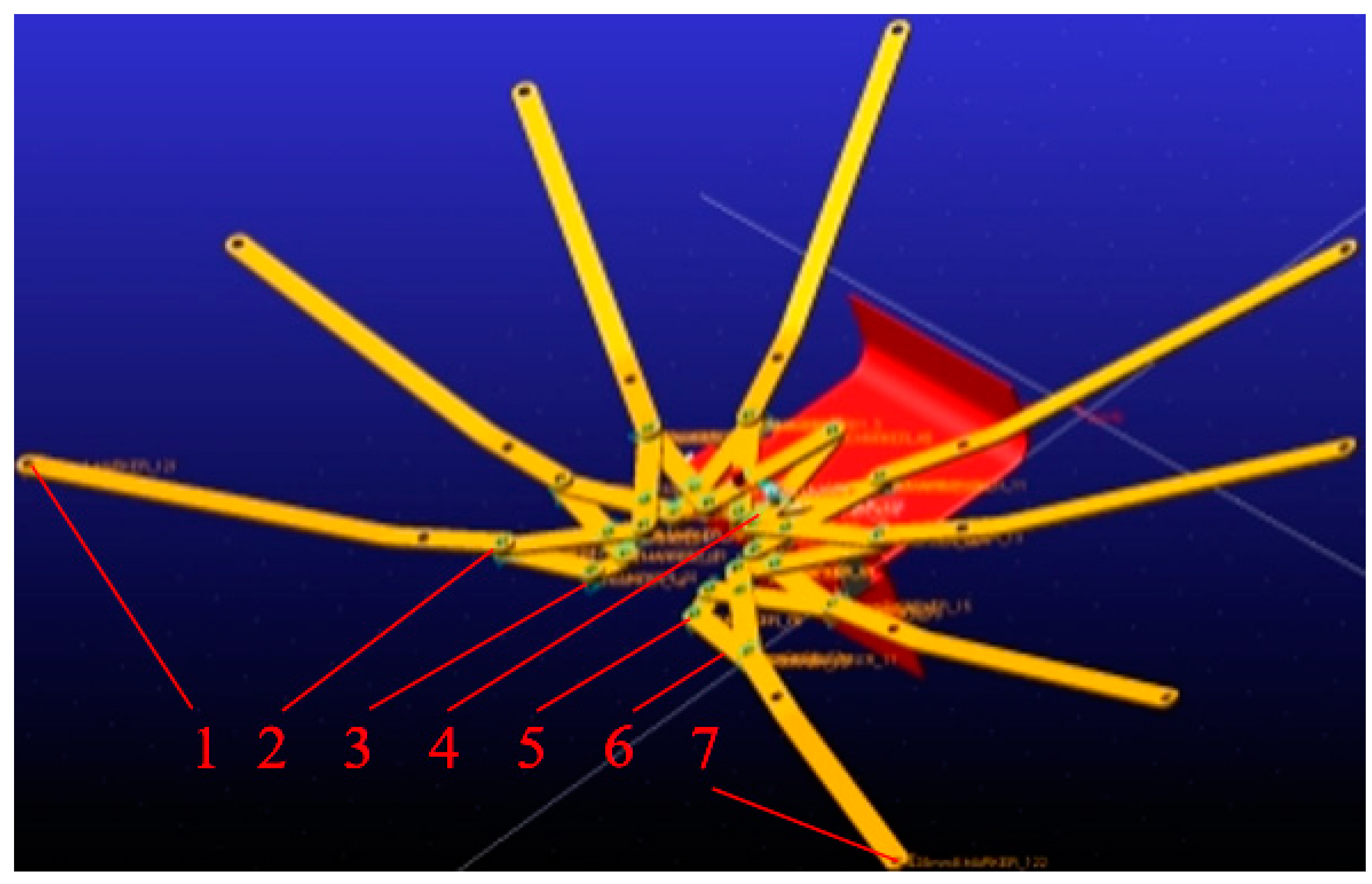
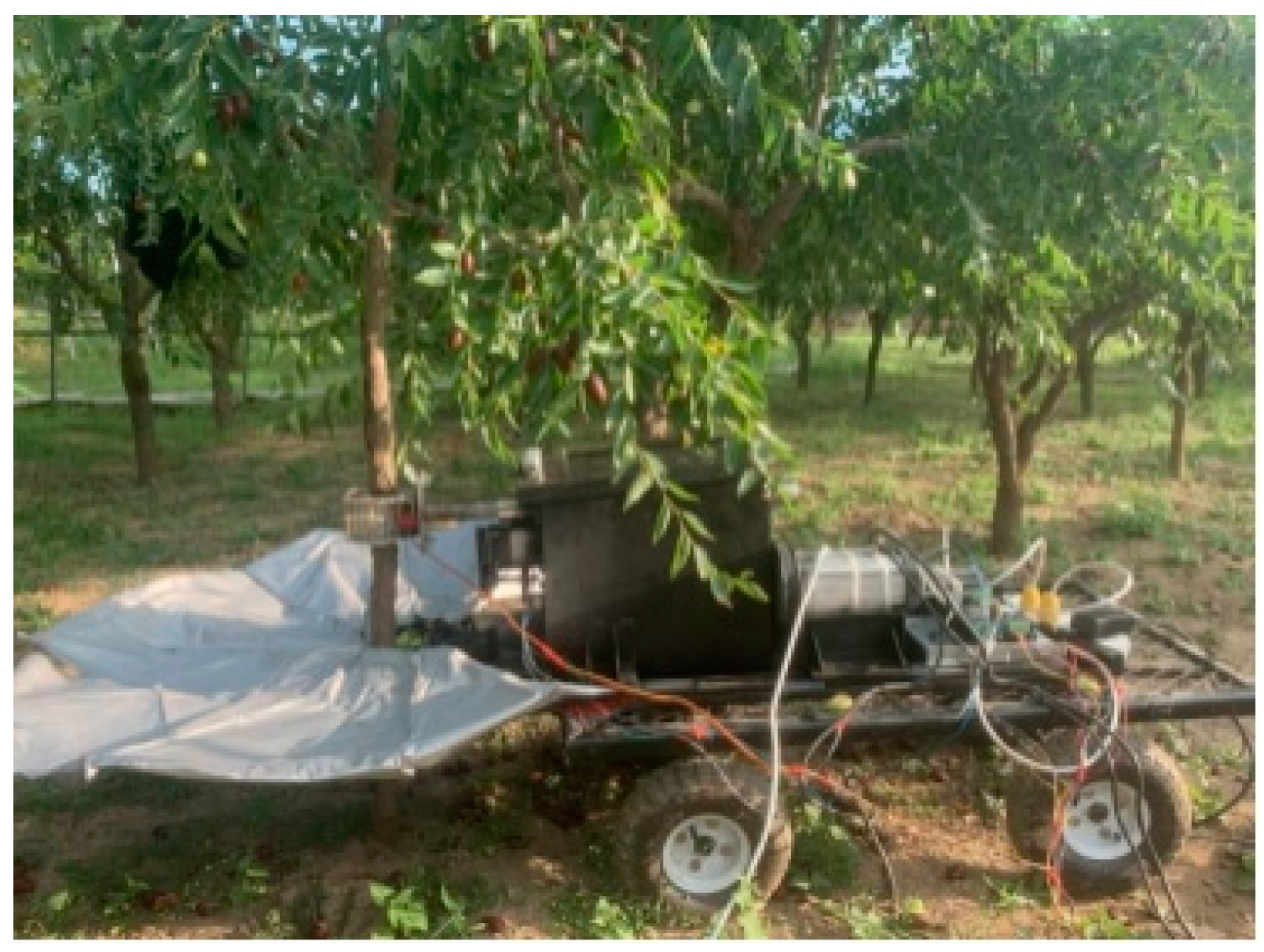

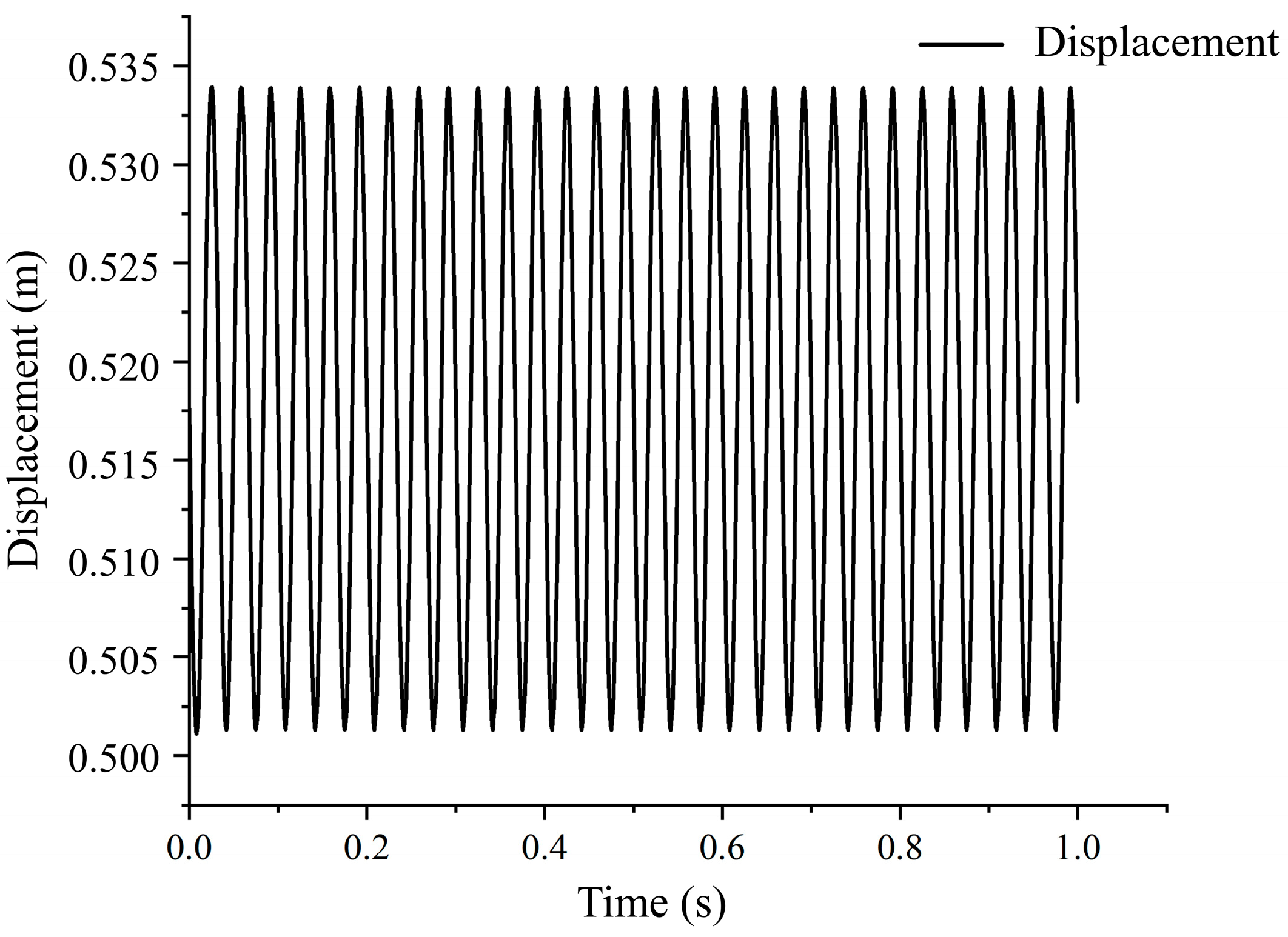
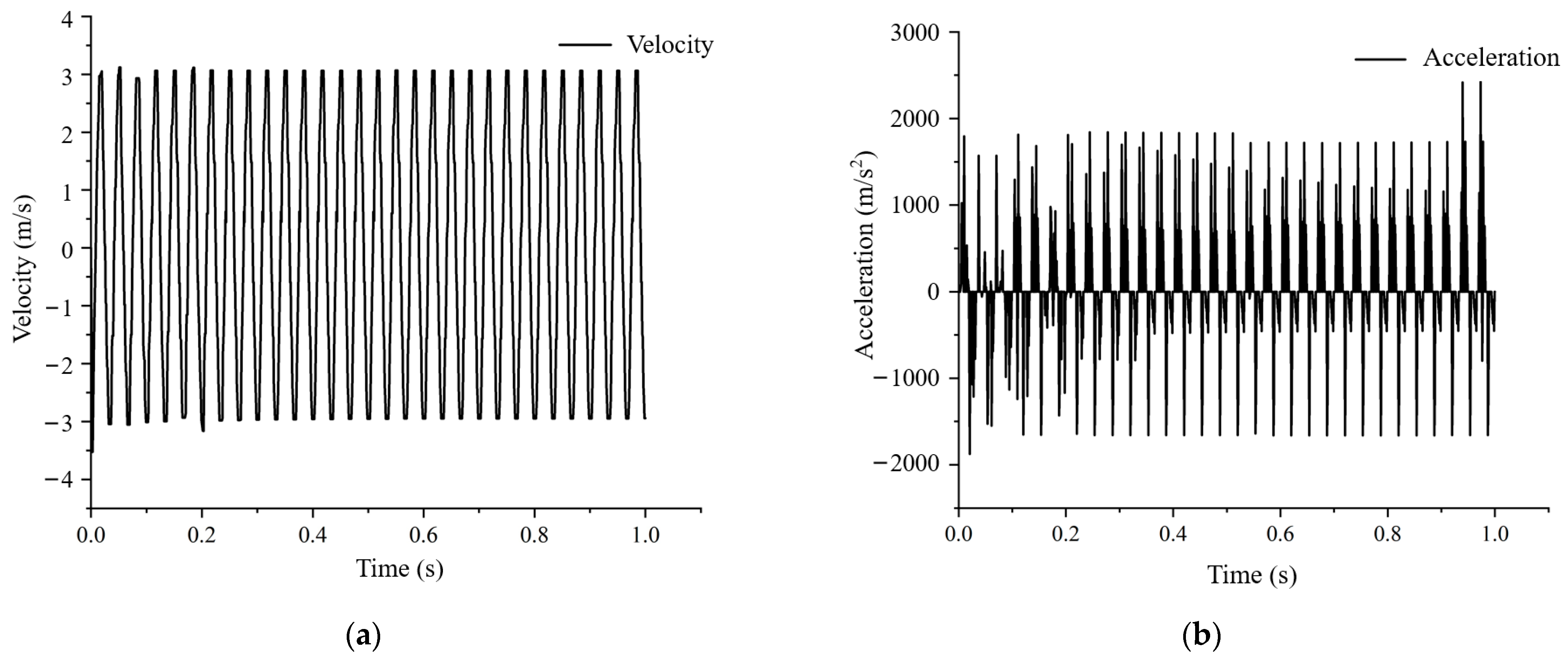

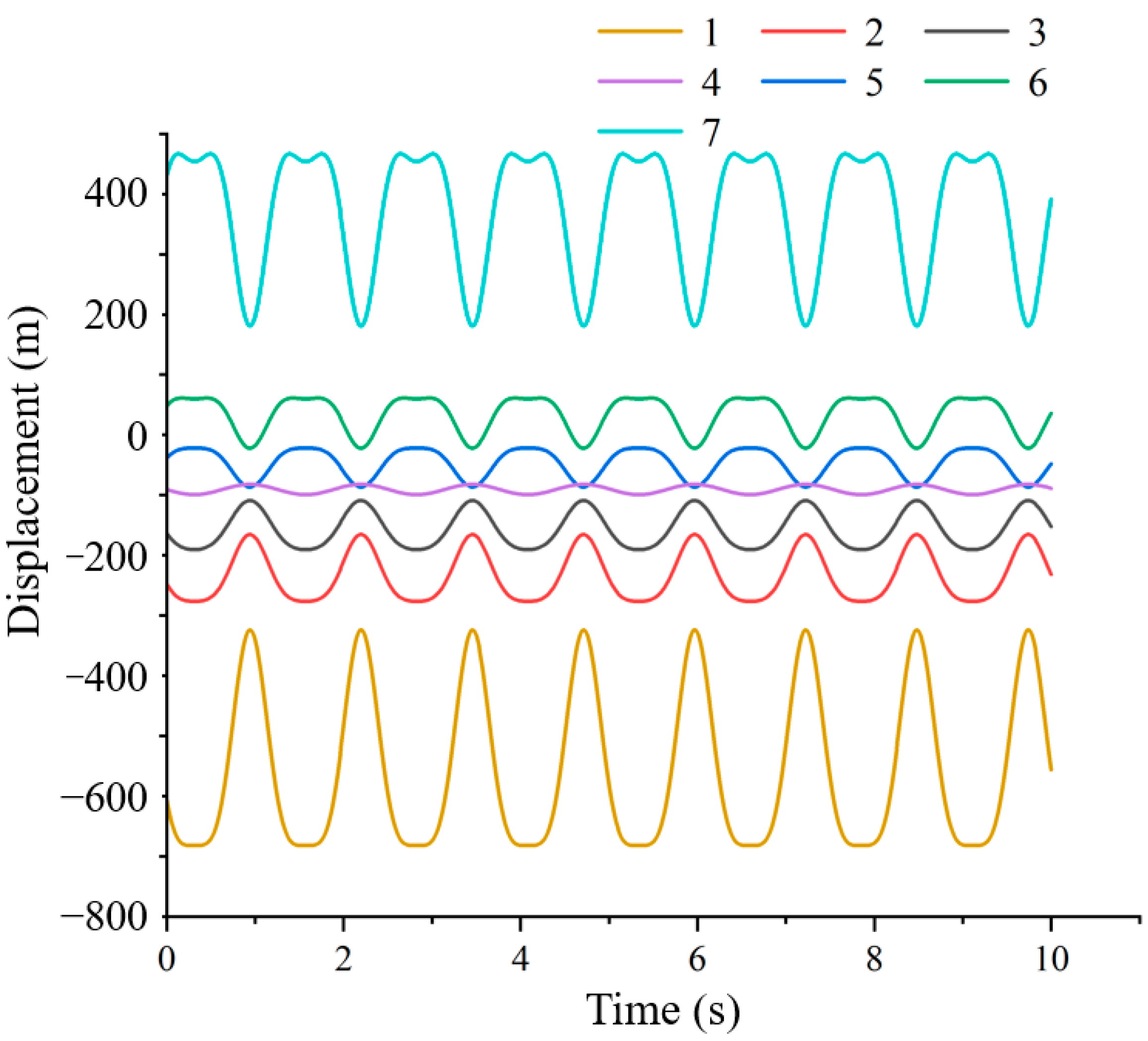
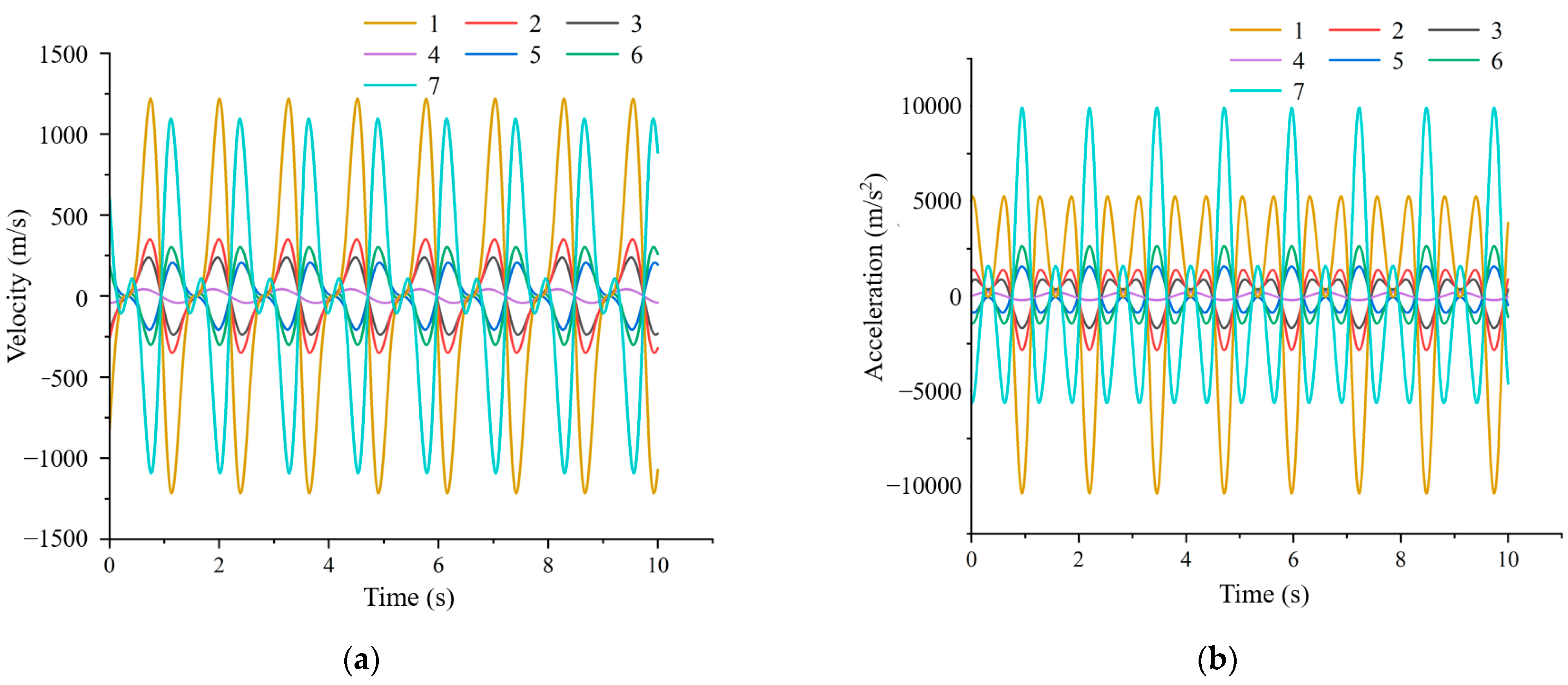
| Symbols | Meaning | Unit |
|---|---|---|
| Vector of component 1 | m | |
| Vector of component 3 | m | |
| Vector of component 4 | m | |
| Length of component 1 | m | |
| Length of component 3 | m | |
| Length of component 4 | m | |
| The tilt angle of component 1 | rad | |
| The tilt angle of component 4 | rad | |
| Angular velocity of component 1 | rad/s |
| Part Name | Total Displacement (mm) | Strain (×10−4 mm) | Stress (Mpa) | |||
|---|---|---|---|---|---|---|
| Maximum | Minimum | Maximum | Minimum | Maximum | Minimum | |
| Umbrella Bone | 13.463 | 0.000 | 9.660 | 3.349 × 10−11 | 163.570 | 3.373 × 10−10 |
| Umbrella Frame | 0.316 | 0.000 | 4.041 | 5.767 × 10−6 | 80.823 | 9.925 × 10−6 |
| Diameter Range (mm) | Diameter (mm) | Total Weight of Vibration Fall Jujubes (kg) | Total Weight of Unvibrated off Jujubes (kg) | Net Harvesting Rate (%) | Average Net Harvesting Rate (%) | Standard Deviation (%) |
|---|---|---|---|---|---|---|
| 29.15–31.26 | 29.16 | 23.77 | 1.52 | 93.99 | 93.98 | 0.57 |
| 30.12 | 21.64 | 1.25 | 94.54 | |||
| 31.26 | 20.41 | 1.44 | 93.41 | |||
| 49.56–52.34 | 49.56 | 26.65 | 1.45 | 94.84 | 94.71 | 0.49 |
| 50.23 | 26.65 | 1.65 | 94.17 | |||
| 52.34 | 29.11 | 1.49 | 95.13 | |||
| 65.23–73.25 | 65.23 | 32.88 | 2.35 | 93.33 | 94.33 | 0.87 |
| 70.85 | 36.21 | 1.95 | 94.89 | |||
| 73.25 | 37.33 | 2.06 | 94.77 |
| Diameter Range (mm) | Diameter (mm) | Total Weight (kg) | Total Collection Weight (kg) | Collection Efficiency (%) | Average Collection Efficiency (%) | Standard Deviation (%) |
|---|---|---|---|---|---|---|
| 29.15–31.26 | 30.12 | 21.64 | 20.51 | 94.78 | 95.78 | 1.00 |
| 29.16 | 23.77 | 23.00 | 96.77 | |||
| 31.26 | 20.41 | 19.55 | 95.78 | |||
| 49.56–52.34 | 49.56 | 26.65 | 23.92 | 89.74 | 89.43 | 0.86 |
| 50.23 | 26.65 | 24.01 | 90.10 | |||
| 52.34 | 29.11 | 25.75 | 88.46 | |||
| 65.23–73.25 | 65.23 | 32.88 | 27.80 | 84.56 | 85.04 | 1.58 |
| 70.85 | 36.21 | 30.33 | 83.76 | |||
| 73.25 | 37.33 | 32.40 | 86.80 |
Disclaimer/Publisher’s Note: The statements, opinions and data contained in all publications are solely those of the individual author(s) and contributor(s) and not of MDPI and/or the editor(s). MDPI and/or the editor(s) disclaim responsibility for any injury to people or property resulting from any ideas, methods, instructions or products referred to in the content. |
© 2023 by the authors. Licensee MDPI, Basel, Switzerland. This article is an open access article distributed under the terms and conditions of the Creative Commons Attribution (CC BY) license (https://creativecommons.org/licenses/by/4.0/).
Share and Cite
Hu, Y.; Feng, J.; Qiao, Y.; Yu, C.; Luo, W.; Zhang, K.; Liu, R.; Han, R. Research and Validation of Vibratory Harvesting Device for Red Jujube Based on ADAMS and ANSYS. Agriculture 2023, 13, 1334. https://doi.org/10.3390/agriculture13071334
Hu Y, Feng J, Qiao Y, Yu C, Luo W, Zhang K, Liu R, Han R. Research and Validation of Vibratory Harvesting Device for Red Jujube Based on ADAMS and ANSYS. Agriculture. 2023; 13(7):1334. https://doi.org/10.3390/agriculture13071334
Chicago/Turabian StyleHu, Yaohua, Junzhe Feng, Yichen Qiao, Chenhao Yu, Wenkai Luo, Kaili Zhang, Runfeng Liu, and Runzhe Han. 2023. "Research and Validation of Vibratory Harvesting Device for Red Jujube Based on ADAMS and ANSYS" Agriculture 13, no. 7: 1334. https://doi.org/10.3390/agriculture13071334
APA StyleHu, Y., Feng, J., Qiao, Y., Yu, C., Luo, W., Zhang, K., Liu, R., & Han, R. (2023). Research and Validation of Vibratory Harvesting Device for Red Jujube Based on ADAMS and ANSYS. Agriculture, 13(7), 1334. https://doi.org/10.3390/agriculture13071334





